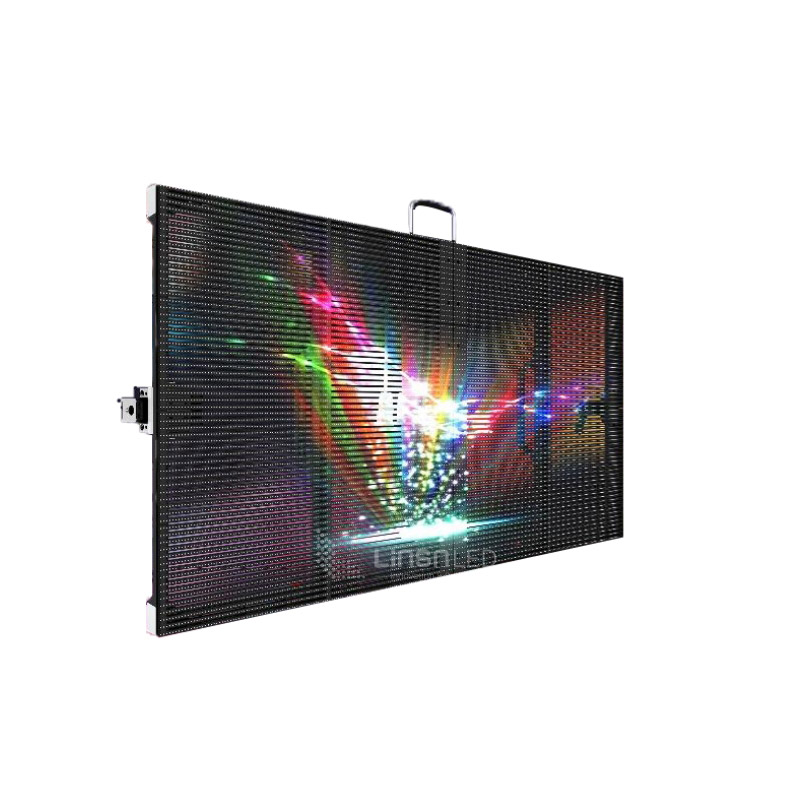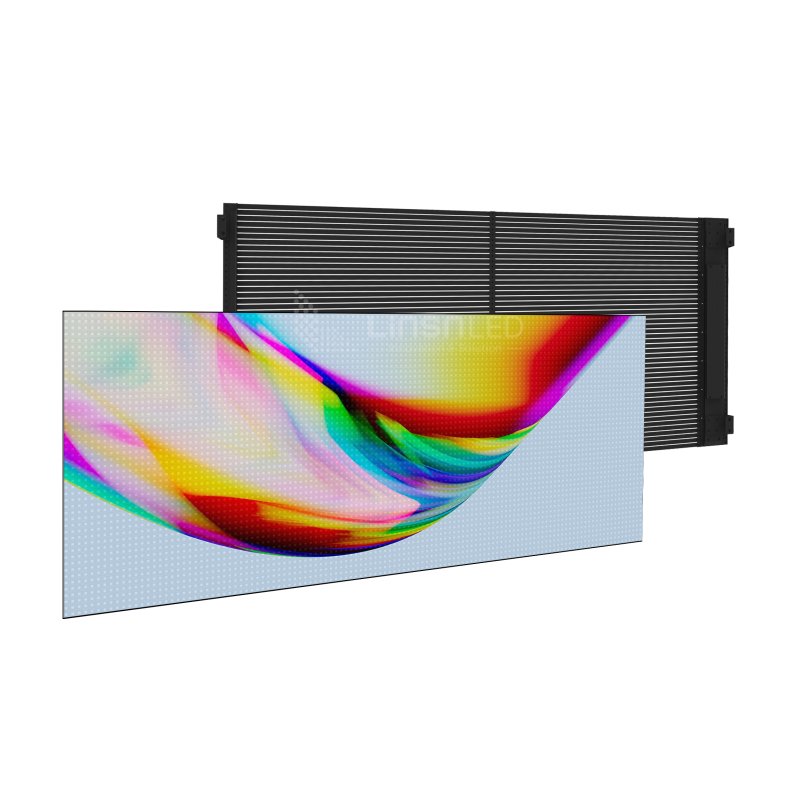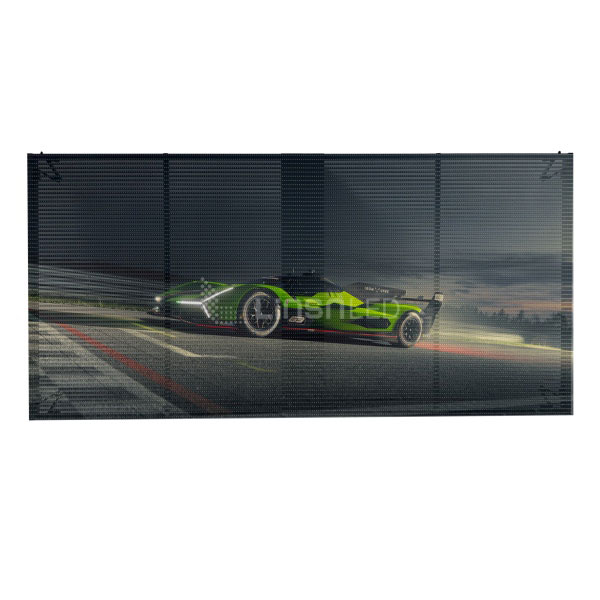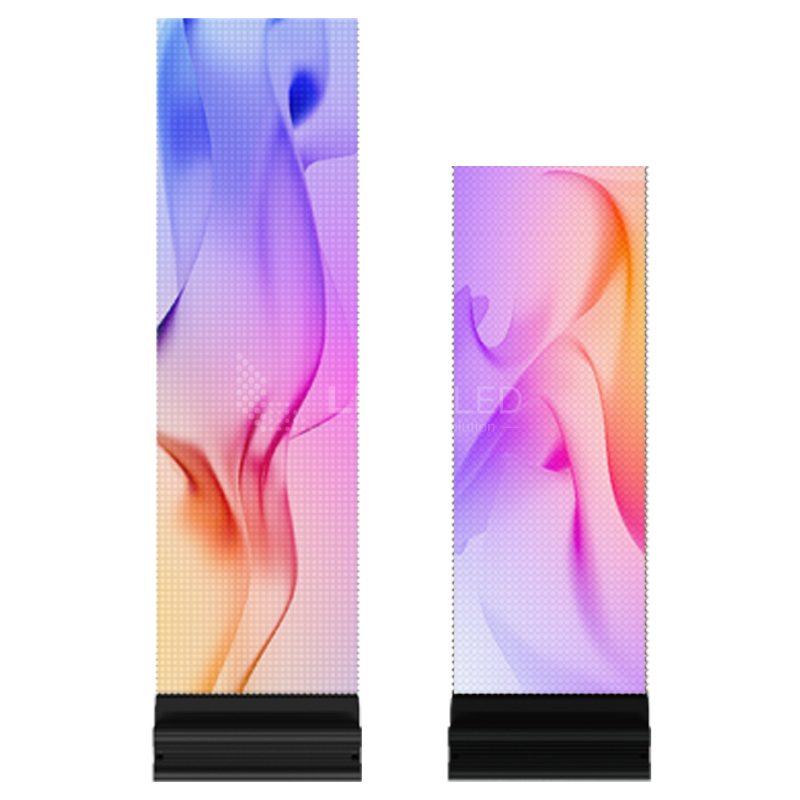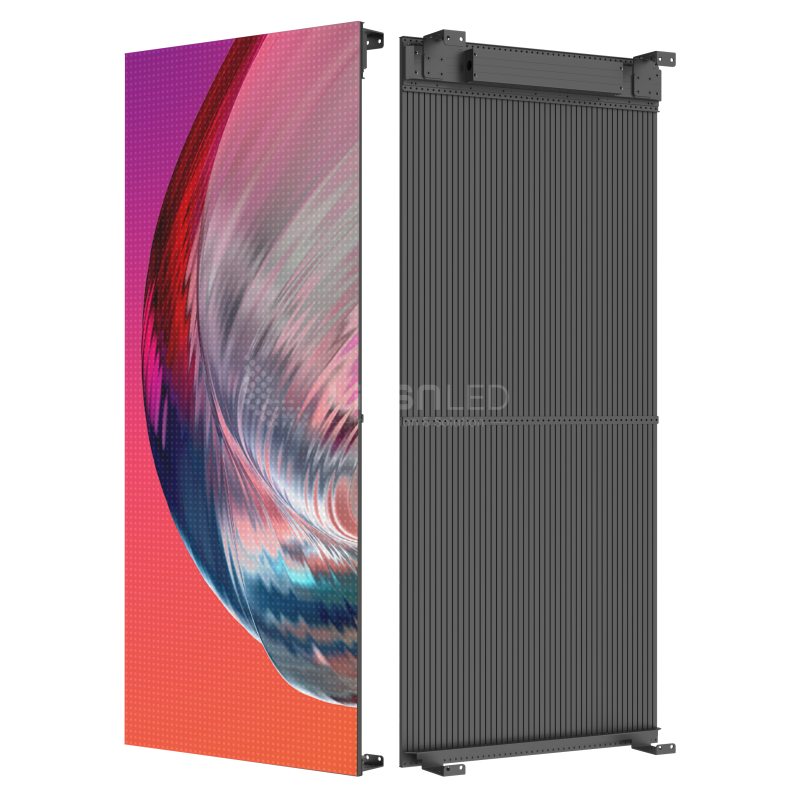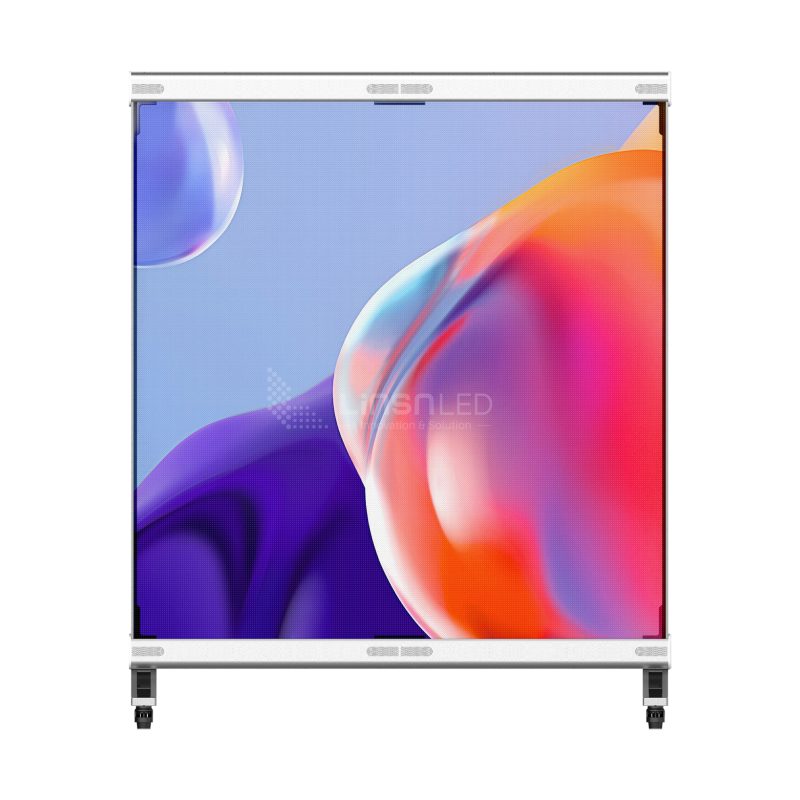Transparent LED Screen
Send Us Message
If you have any LED display projects or technical problems regarding our LED display products. Please send us a message, we will reply to you in 24 hours.
ATTENTION: lf you bought LED Display & LED Module from other suppliers, Please get help from them directly.
Holographic Transparent LED Screens: 2025 All in One Guide
Walking past a store where the window isn’t just glass—it’s alive with moving images of the latest fashion collection, yet you can still see the products inside. This is transparent LED screens, a technology reshaping retail, architecture, and entertainment. Businesses and architects are ditching bulky traditional displays for these sleek, see-through LED panels that merge digital innovation with physical space.
Why the shift? Traditional LED screens block natural light, require heavy installations, and often clash with modern aesthetics. In contrast, transparent LED displays offer up to 90% light transmission, blend seamlessly into glass facades, and consume 40% less energy. Retail giants like Apple and Louis Vuitton have already adopted transparent LED window displays to create immersive shopping experiences, reporting up to a 35% boost in foot traffic.
According to MarketsandMarkets, the transparent display market is projected to hit $4.9 billion by 2026, driven by demand for glass LED screens in smart cities and interactive advertising. Whether it’s a luxury store’s transparent video wall or a corporate lobby’s clear LED panel, this technology is redefining visual communication. Today, let’s dive into why it matters, and how to leverage it for your business.
1. What Is a Transparent LED Screen?
2. Advantages of See Through LED Screen
3. Applications of Clear LED Display
4. How to Choose the Right Transparent LED Video Wall
5. Installation & Maintenance Guide
6. Transparent LED Display Price: What to Expect
7. Best Transparent LED Screen Manufacturer – LedInCloud
8. Market Trends & Future Outlook
9. Common Questions About Holographic Transparent LED Screen
10. Conclusion
1. What Is a Transparent LED Screen?
1.1 Definition & Core Technology
A transparent LED screen is a cutting-edge display that allows light to pass through its surface while projecting vibrant visuals. Unlike traditional LED boards that rely on opaque back panels, these screens use glass-based substrates or ultra-thin LED films mounted between glass layers. The secret lies in their see-through structure: LED chips are strategically placed on transparent PCB strips, leaving gaps for light transmission.
1.2 How It Works
LED Chip Placement:
Micro-LED chips (as small as 0.5mm²) are embedded in vertical or horizontal strips across the screen. These strips occupy only 10–30% of the surface area, enabling 60–90% transparency.
Light Transmission:
Natural or ambient light passes through the gaps between LED modules, maintaining visibility through the screen. At night, the LEDs illuminate content without creating a “black mirror” effect.
Image Clarity:
Advanced pixel compensation algorithms ensure sharp visuals even with sparse LED distribution. For example, a transparent micro-LED display with P2.5 pixel pitch can achieve 4K resolution on a 10㎡ screen.
1.3 Key Technical Parameters
| Parameter | Ideal Range | Impact on Performance |
| Transparency Rate | 70-90% | Higher = better visibility through screen (critical for transparent window displays). |
| Brightness | 4000-8000 nits | 6000+ nits required for outdoor transparent LED screens in direct sunlight. |
| Pixel Pitch | P3.9-P10 | Smaller pitch (P3.9) = sharper images for close viewing (e.g., small transparent LED screens in retail). |
| Viewing Angle | 160°-175° | Wider angles ensure visibility in crowded spaces like malls. |
| Thickness | 8-20mm | Thinner models (<10mm) suit flexible transparent LED screens for curved installations. |
1.4 Transparent LED vs. Traditional LED
| Feature | Transparent LED Screen | Traditional LED Screen |
| Transparency | 60-90% light transmission | 0% (opaque back panel) |
| Weight | 8-15kg/㎡ (no heavy cabinets) | 25-40kg/㎡ (steel frame required) |
| Installation | Directly mounted on glass/curtain walls | Requires structural support and spacing |
| Power Consumption | 180W/㎡ (40% less energy use) | 500W/㎡ |
| Aesthetics | Invisible when off; sleek design | Bulky, blocks natural light |
2. Advantages of See Through LED Screen
Transparent LED screens aren’t just a novelty—they solve real-world problems for businesses and designers. Here’s why industries from retail to aerospace are adopting this technology:
2.1 Unmatched Transparency & Aesthetic Versatility
A transparent LED display achieves up to 90% light transmission, far surpassing traditional digital signage. This means:
- Retailers can showcase products behind a transparent video wall while running promotions (e.g., Rolex stores use see-through LED panels to display watches without hiding window views).
- Architects preserve building aesthetics: The Burj Khalifa’s lobby uses glass LED screens that vanish when idle, maintaining its iconic glass facade.
- Unique designs: LedInCloud’s flexible transparent LED screen bends around curved surfaces, enabling spiral installations in museums.
Pro Tip: For luxury stores, pair a transparent micro-LED display (P2.5 pixel pitch) with motion sensors to trigger product videos when shoppers approach.
2.2 Lightweight & Space-Saving Design
Traditional LED walls require bulky cabinets and steel frames. In contrast:
- Weight: A 10㎡ transparent LED panel weighs just 80–150kg vs. 400kg+ for traditional setups.
- Thickness: At 8–20mm thick, these screens fit into spaces where conventional displays can’t.
- Installation flexibility: Use adhesive LED film screens on existing glass or magnetic mounts for temporary setups like pop-up stores.
Case Study: Dubai Mall saved $220,000 in structural reinforcements by replacing a 5-ton billboard with a transparent LED wall weighing 600kg.
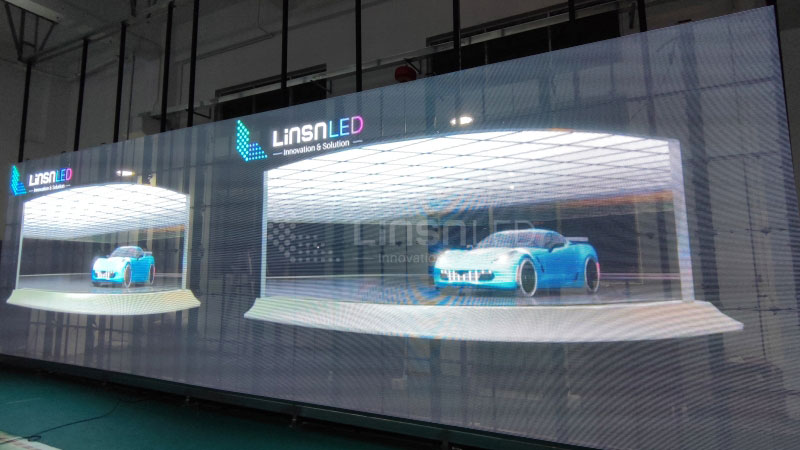
2.3 Energy Efficiency That Cuts Costs
Transparent LED technology slashes power consumption through:
- Low-heat LED chips: Samsung’s IWA series uses 180W/㎡ vs. 500W/㎡ for conventional displays.
- Adaptive brightness: Built-in ambient light sensors (e.g., LedInCloud’s transparent outdoor LED screen) auto-adjust from 2,000 to 8,000 nits, saving 30% energy.
- Solar compatibility: Some clear LED panels integrate photovoltaic layers to harvest energy—Google’s London office reduced grid reliance by 18% using this hybrid system.
2.4 Simplified Maintenance & Durability
Forget scaffolding for repairs:
- Front/rear access: Fix individual modules without dismantling the entire transparent LED board (maintenance time reduced by 70%).
- IP65–IP68 ratings: Outdoor transparent LED screens withstand monsoons, dust storms, and -30°C to 50°C temperatures.
- Long lifespan: LedInCloud’s transparent micro-LED displays last 100,000+ hours (11 years at 24/7 operation).
Pro Hack: Use NovaStar software for diagnosis to detect failing pixels in transparent LED video walls before they impact content.
2.5 Customization for Any Project
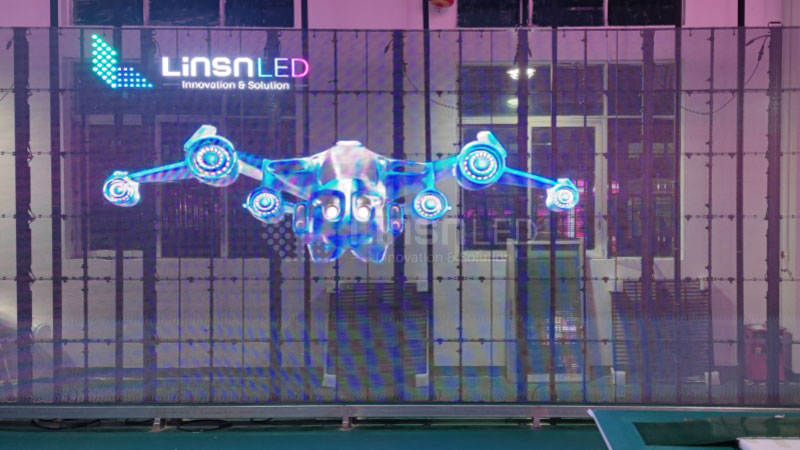
From shape to software:
- Size: Order small transparent LED screens (0.5㎡) for kiosks or 100㎡+ transparent LED facades for skyscrapers.
- Curved designs: Flexible transparent LED screens bend to 30° radii (used in Mercedes’ circular car displays).
- Content control: Integrate with IoT platforms to manage global transparent LED signage networks remotely.
3. Applications of Clear LED Display
3.1 Retail & Commercial Spaces
(1) Core Function: Transparent LED window displays that combine dynamic ads with product visibility.
(2) Key Benefits:
- Interactive Engagement: Motion sensors trigger content changes as customers approach, increasing dwell time by 30–50%.
- Space Optimization: Ultra-thin designs (8–12mm) avoid blocking storefront views.
(3) Technical Requirements:
- Pixel Pitch: P3.9–P6 for 1–5m viewing distances.
- Brightness: 4000–6000 nits to combat indoor/outdoor glare.
(4) Industry Trend: Over 60% of premium retail spaces now integrate transparent video walls, replacing static posters for higher engagement.
3.2 Architectural Integration
(1) Core Function: Outdoor transparent LED screens embedded in glass facades.
(2) Key Benefits:
- Energy Efficiency: Reduce building cooling costs by 20–35% compared to traditional illuminated signage.
- Regulatory Compliance: Meet strict urban planning codes for historical buildings (e.g., ≤15% visual obstruction).
(3) Technical Requirements:
- IP68 waterproof rating for rain and humidity.
- Wind load resistance up to 150km/h for high-rise installations.
(4) Innovation: Advanced transparent LED mesh screens now allow 70–85% transparency while displaying 4K content, ideal for corporate towers and museums.
3.3 Automotive & Transportation
(1) Core Function: Clear LED panels for interactive showrooms and smart infrastructure.
(2) Key Benefits:
- Dynamic Showrooms: Display vehicle specs and customization options directly on glass partitions.
- Public Transit: Transparent LED signage in train stations provides real-time updates without obstructing passenger views.
(3) Technical Requirements:
- Anti-vibration modules (tested to 5–500Hz) for high-traffic areas.
- 8000+ nits brightness for sunlight-readable EV charging station displays.
(4) Industry Shift: Automotive showrooms report a 40–60% reduction in physical signage costs by switching to transparent LED boards.
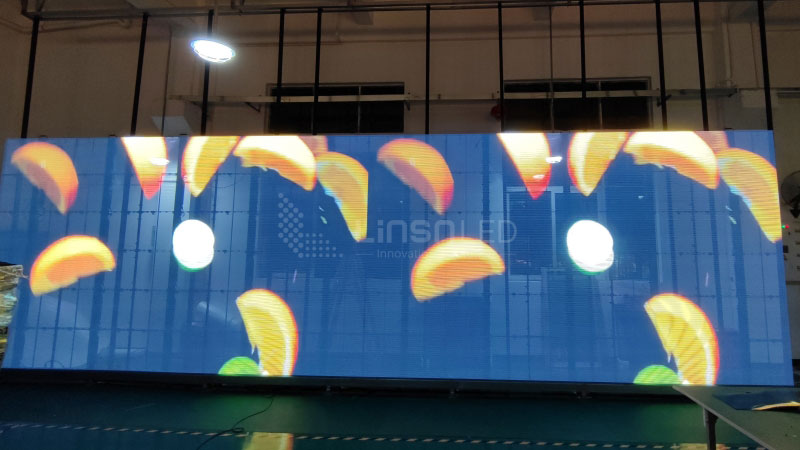
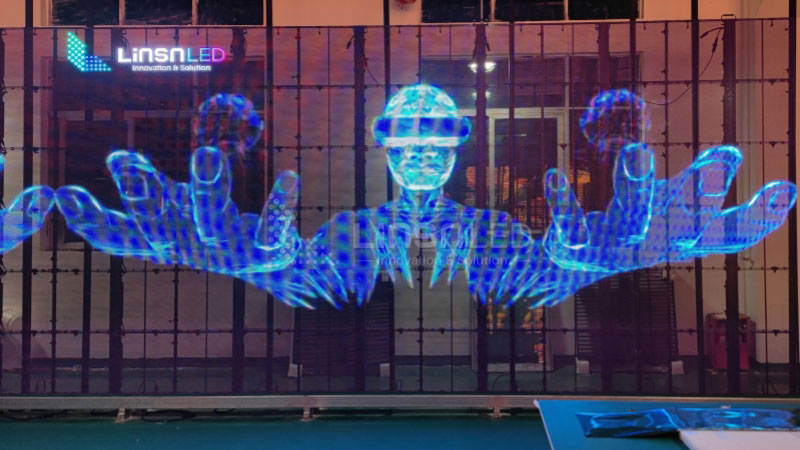
3.4 Events & Exhibitions
(1) Core Function: Transparent LED screen rentals for temporary installations.
(2) Key Benefits:
- Quick Setup: Modular designs assemble 50㎡ stages in under 4 hours.
- Adaptive Content: Run live social media feeds or sponsor ads on see-through LED walls during concerts.
(3) Technical Requirements:
- Front/rear maintenance access for rapid on-site repairs.
- 3840Hz refresh rate for smooth camera capture under stage lighting.
(4) Cost Efficiency: Renting a 10㎡ flexible transparent LED screen costs 30–50% less than building a custom stage backdrop.
3.5 Corporate & Education
(1) Core Function: Transparent LED display boards for hybrid collaboration.
(2) Key Benefits:
- Hybrid Meetings: Overlay data charts on glass meeting room walls while maintaining eye contact.
- Interactive Learning: Project 3D models onto transparent micro-LED displays in engineering labs.
(3) Technical Requirements:
- Matte anti-reflective coatings for office lighting environments.
- HDMI 2.1 compatibility for 4K/120Hz content sharing.
(4) Productivity Data: Businesses using transparent smart glass report 25% faster decision-making in strategy sessions.

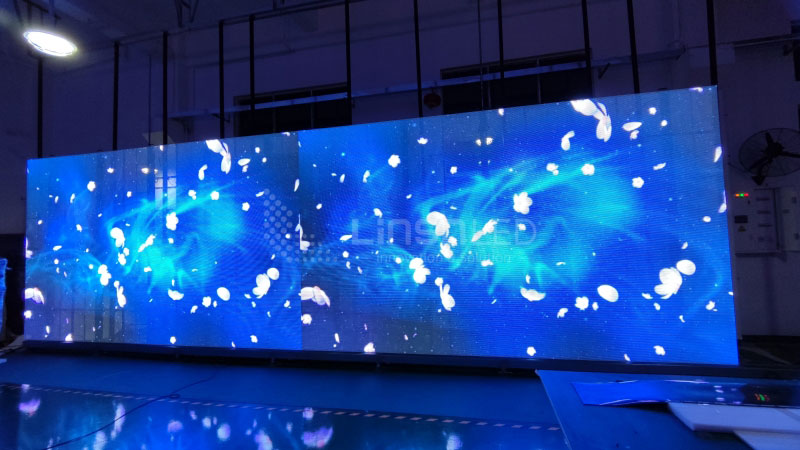
3.6 Emerging Applications
(1) Healthcare: Transparent LED film screens in operating rooms overlay patient vitals on observation windows.
(2) Aviation: Cabin flexible LED screens transparent to flight paths replace traditional window shades.
(3) Smart Homes: Adhesive LED transparent film turns patio glass into weather-responsive art displays.
4. How to Choose the Right Transparent LED Video Wall
Selecting the ideal transparent LED display requires balancing technical specs, budget, and application needs.
Step 1: Define Your Primary Use Case
Different applications demand unique configurations. Use this quick reference table to narrow your focus:
| Application | Key Requirements | Recommended Specs |
| Retail Windows | High transparency, close viewing | Transparency ≥80%, P3.9-P5 pixel pitch |
| Building Facades | Weather resistance, long viewing distance | IP68 rating, P6-P10 pitch, 7000+ nits |
| Event Rentals | Quick setup, portability | Modular design, magnetic mounting, P6 pitch |
| Automotive Displays | Vibration resistance, sunlight readability | MIL-STD-810G certified, 8000+ nits |
| Corporate Lobbies | Anti-glare, hybrid meeting support | Matte coating, HDMI 2.1, P4.8 pitch |
Step 2: Prioritize Technical Parameters
A. Transparency vs. Resolution
High Transparency (80–90%): Retail windows, glass partitions.
Lower pixel density (P6–P10) may reduce image sharpness at <2m viewing distances.
Balanced (60–75%): Outdoor facades, stages.
Allows higher resolution (P3.9–P5) while maintaining 60%+ light transmission.
B. Brightness Levels
Indoor Use: 2500–4500 nits (avoids glare under fluorescent lighting).
Outdoor/Sunlit Areas: 6000–8000 nits (combats direct sunlight; check local regulations to avoid light pollution fines).
C. Pixel Pitch & Viewing Distance
Calculate the optimal pitch using this formula:
Minimum Viewing Distance (meters) = Pixel Pitch (mm) × 2
Example: A P4.8 screen requires ≥9.6m viewing distance for seamless visuals.
D. Durability Certifications
IP Rating: IP65 (dustproof, water-resistant) for indoor use; IP68 (submersion-proof) for outdoor installations.
Temperature Range: -30°C to +60°C for extreme climates.
Step 3: Evaluate Installation Constraints
Weight Limits: Most transparent LED panels weigh 8–12kg/㎡, but verify building load capacity for large facades.
Mounting Options:
- Adhesive Film: For glass surfaces (avoid textured or frosted glass).
- Aluminum Frames: For permanent outdoor screens.
- Magnetic Systems: For rental/stage setups.
- Maintenance Access: Ensure ≥30cm rear clearance for module replacements.
Step 4: Budget Planning & Hidden Costs
| Cost Component | Notes |
| Screen Hardware | Higher for P3.9, 8000nits, curved designs |
| Control System | Novastar, Colorlight, or Huidu processors |
| Content Creation | Dynamic templates vs. custom 4K animations |
| Installation | Add 20% for high-rise/outdoor projects |
| Annual Maintenance | Covers spare modules, software updates |
Step 5: Avoid These 4 Common Mistakes
Ignoring Ambient Light: A 6000-nit outdoor transparent LED screen may overpower indoor environments.
Overlooking Content Strategy: 4K screens waste ROI if paired with low-res graphics.
Choosing Price Over Certifications: Non-UL-certified screens risk building code violations.
Neglecting Scalability: Ensure control systems support future expansions (e.g., adding 20% more modules).
5. Installation & Maintenance Guide
Proper installation and maintenance are critical to maximizing the lifespan and performance of transparent LED displays. These videos provide actionable steps:
Transparent LED Display Installation
Troubleshooting Common Issues:
| Immediate Action | Long-Term Solution |
| Isolate via row/column test | Replace faulty module within 72 hours |
| Recalibrate via 3D LUT | Check aging LEDs with spectroradiometer |
| Test voltage stability (≤±3% variance) | Replace unstable power drivers |
| Activate dehumidifier mode (if equipped) | Reseal joints with UV-cured adhesive |
6. Transparent LED Display Price: What to Expect
On LedInCloud, registered users access real-time transparent glass LED display price trends.
Free register LedInCloud Benefits:
- Save & compare quotes
- Access to technical advisors via email or phone
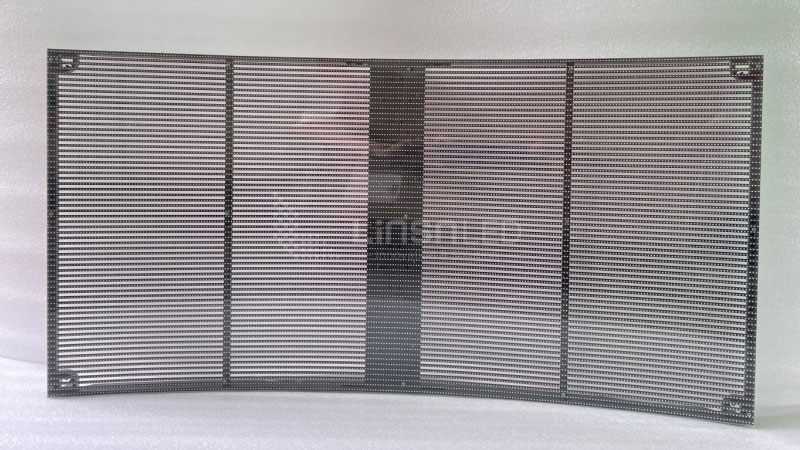
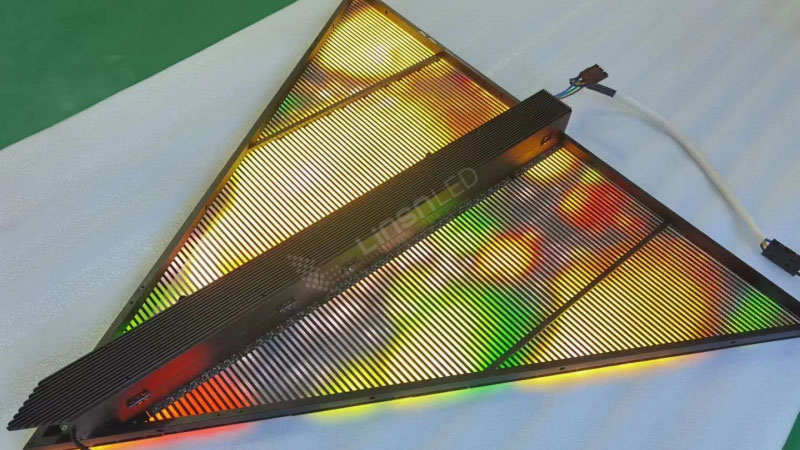
7. Best Transparent LED Screen Manufacturer - LedInCloud
Selecting the right transparent LED screen manufacturer is critical to product quality, technical support, and long-term ROI. While many suppliers exist globally, LedInCloud- a LED Screen Cloud Platform stands out as a premier platform for sourcing and comparing vetted manufacturers. Here’s why:
(1)Certifications & Compliance
Look for ISO 9001 (quality management) and RoHS (environmental safety) certifications.
Compliance with regional standards (e.g., UL, CE) for outdoor installations.
(2) Technical Expertise
R&D capabilities: Proprietary innovations (e.g., COB technology for indoor HD screens).
Customization: Ability to produce non-standard shapes (curved, flexible) and pixel pitches (P3.9 to P16).
(3) Production Capacity
Facilities with manufacturing and office areas of 12,000 ㎡, ensure scalability and faster lead times.
(4) Global Support
On-site installation teams and 24/7 multilingual customer service.
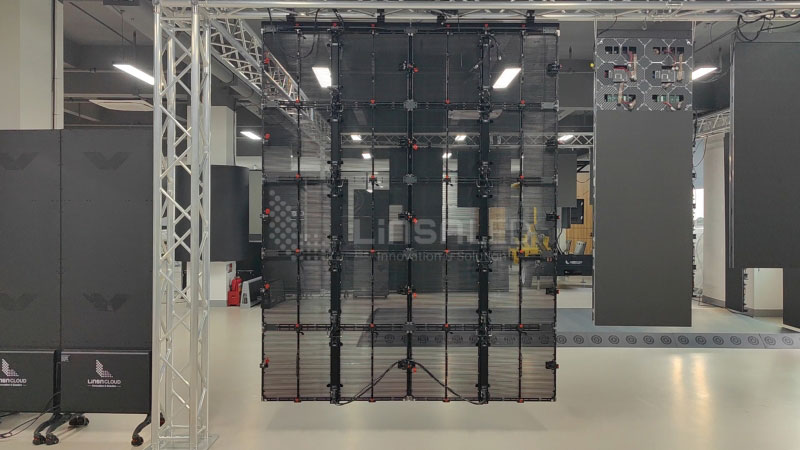
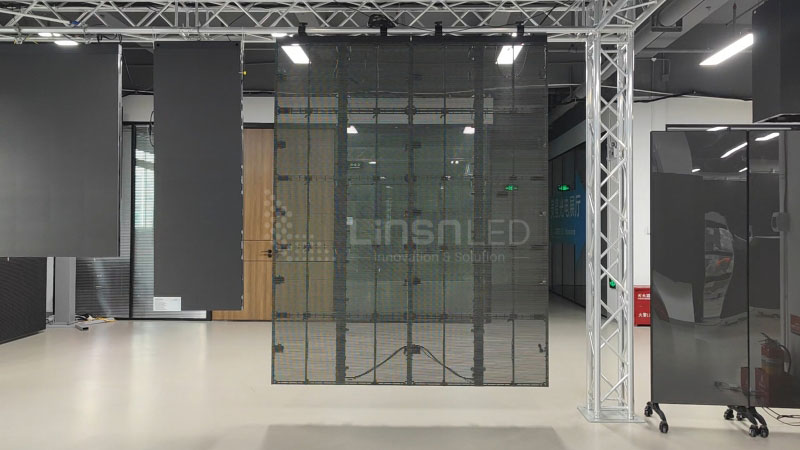
8. Market Trends & Future Outlook
The transparent display market is projected to reach $4.9 billion by 2026, with a CAGR of 32.1%, fueled by demand in retail, smart cities, and automotive sectors.
Micro-LED Dominance: By 2027, transparent micro-LED displays will capture 40% of the high-end retail market.
Rental Market Surge: Event-driven demand for transparent LED screen rentals will grow by 45%, driven by modular designs and quick setup.
Holographic Displays: LedInCloud 3D holographic screens will revolutionize luxury retail and museums.
9. Common Questions About Holographic Transparent LED Screen
What is the difference between a holographic transparent LED screen and a regular transparent LED display?
A holographic transparent LED screen uses ultra-fine LED strips with higher transparency, creating a floating, three-dimensional visual effect. It offers a more futuristic, lightweight look compared to standard transparent LED screens, which may have slightly denser LED arrangements for higher brightness.
Can holographic transparent LED screens be used outdoors?
Yes, but they need to meet specific requirements such as a higher brightness level (≥5000 nits) and a suitable IP rating (IP65 or above). Most are designed for indoor or semi-outdoor use, particularly in controlled environments like shopping malls or exhibition halls.
How transparent are these screens?
Most holographic transparent LED screens offer 60% to 90% transparency, depending on pixel pitch and design. This allows viewers to see both the digital content and what’s behind the screen, such as a store interior or glass wall.
Are holographic transparent LED screens energy-efficient?
Yes. They typically consume less power than traditional LED video walls due to their sparse LED arrangement and lower density. Many models also support smart brightness control, reducing energy use in different lighting conditions.
Can I customize the size and shape of the screen?
Absolutely. These screens are modular, allowing flexible sizing and even custom shapes like curves or cylinders. Manufacturers often offer tailored solutions to fit specific architectural or display needs.
10. Conclusion
Whether it’s a flexible transparent LED screen for curved architectures or a transparent micro-LED display for luxury boutiques, adaptability drives ROI.
With the market surging to $4.9B by 2026, if you’re planning your next display project, a well-designed transparent LED screen could be the standout element that transforms your space and captivates your audience. If you have any questions, please contact LedInCloud. We will have a professional team to answer your questions at any time.

